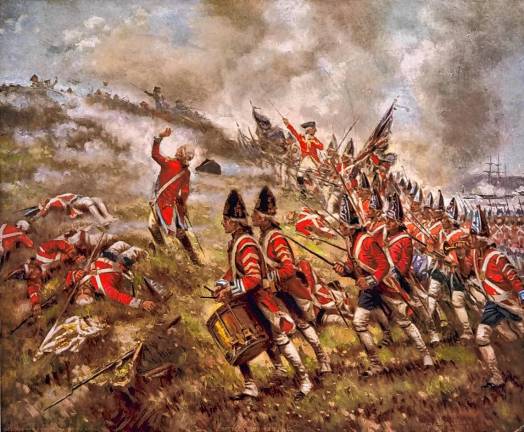
As this column focuses on history and history related to Sussex County, we will dwell frequently on the 250th anniversary of the lead up to the birth of our nation, the beginning of the United States of America.
As in any world-sized event, more than a cursory view is necessary to understand why societies make such broad decisions as to go to war with a country and to break into a new one. We will try to look at what happened during the summer of a quarter-millenium ago.
On June 15, 1775, the Second Continental Congress had been in session, working on major issues and making many pivotal decisions about how the colonies would go about their business - with or without the mother country of Great Britain.
They had appointed George Washington as commander-in-chief of the newly formed Continental Army, unifying colonial militias under one banner.
On June 17, 1775, the Battle of Bunker Hill took place. The British were the winners but suffered heavy casualties and still the Americans were holding on around Boston.
On July 3, 1775, Washington officially took command of the army. He and his troops were in Cambridge, Mass., where they were in action conducting the siege of Boston. This was, in my opinion, a superb strategic decision. where colonial forces had surrounded British troops.
On July 6, 1775, the Second Continental Congress issued the Declaration of the Causes and Necessity of Taking Up Arms. This was a document written by Thomas Jefferson and John Dickinson, a wealthy man from Delaware. This announcement was made to justify the colonies’ armed resistance.
On July 8, 1775, the Second Continental Congress sent the Olive Branch Petition by sailing ship across the Atlantic Ocean to Britain’s King George III as a final attempt at reconciliation. The British government rejected the petition, and Britain declared the colonies in rebellion.
Speaking of the siege of Boston, this took place between April 19, 1775, and March 17, 1776. It started with the Battles of Lexington and Concord on April 19, 1775, the day after Paul Revere and others rode out from Boston to warn of British troops marching west into the countryside.
In a bright decision, Washington had Gen. Henry Knox retrieve cannon from the occupied Fort Ticonderoga in distant Lake Champlain, then haul more than 50 cannons across the waters and mountains in winter to be secretly placed at Dorchester Heights overlooking Boston and forcing the enemy to abandon Boston.
So the 13 colonies moved from holding small and independent protests to tending to look on themselves as a group, an organization of sorts, that was resisting the British as one body.
The troops under Washington were shifting from small and independent militias to a national force. The soldiers were wearing insignias recognized by the group, and Washington emphasized that the force exhibit unity and professionalism.
Bill Truran, Sussex County’s historian, may be contacted at billt1425@gmail.com